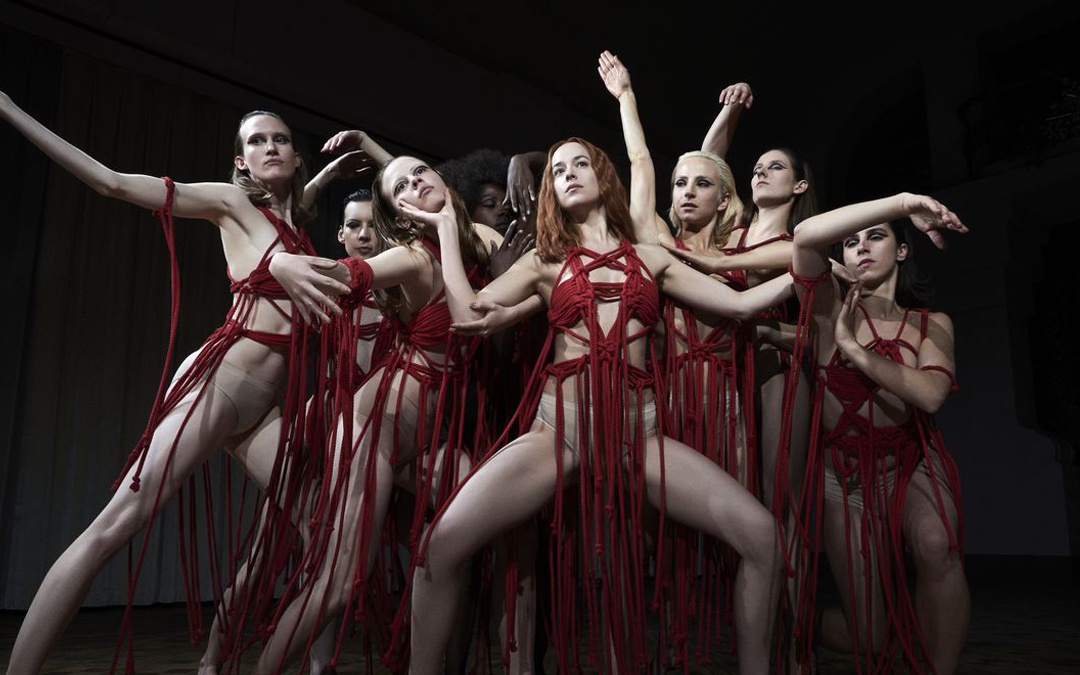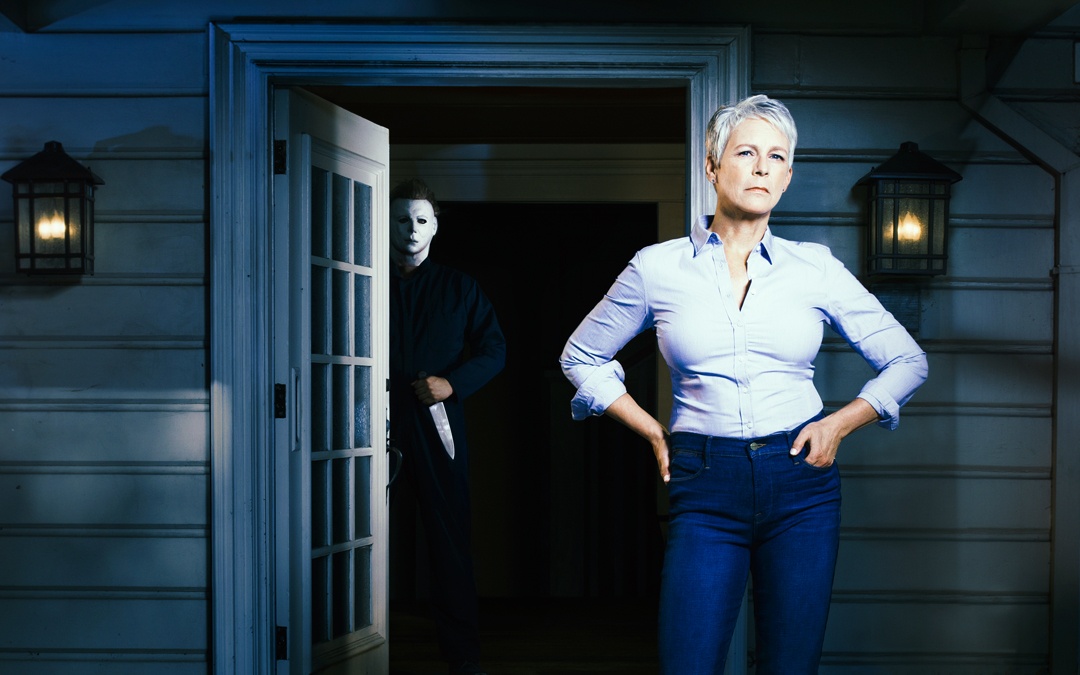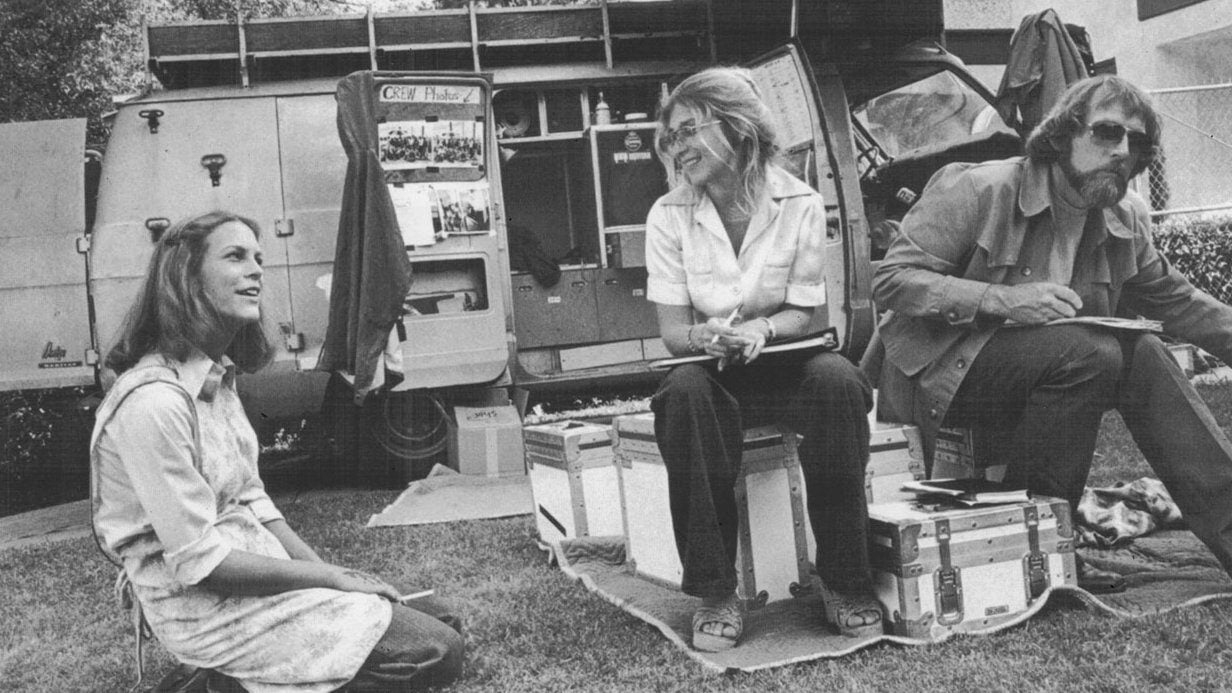All the Write Moves: 'Halloween'
November 5, 2018
Forty years after John Carpenter’s brilliantly minimalistic thriller Halloween introduced movie audiences to relentless murderer Michael Myers, the mask-wearing psychopath also known as “the shape” is back in another movie called Halloween. The new film is a direct sequel to the 1978 picture, representing a bold attempt to erase eight previous installments featuring Michael’s continued adventures. In its first two weekends, the new film has greatly exceeded box office projections, all but guaranteeing that another installment of the franchise will emerge in the future (no spoilers here about the ending of the current movie).
As written by Jeff Fradley, Danny McBride and David Gordon Green (the latter of whom also directed), the 2018 Halloween contains as many tricks as it does treats. Since the tricks include the type of goofy plot twists and silly contrivances that horror fans love (or love to hate), it’s the treats that merit inspection. The 2018 Halloween has obvious flaws, but Green and his collaborators have put forth a legitimate movie containing a handful of wild ideas. As such, this Halloween is arguably the first respectable Michael Myers picture since 1978.
Prior knowledge of the series enriches the experience of watching the new Halloween but isn’t absolutely necessary; the writers do a solid job of mapping the terrain for newcomers. For purposes of this analysis, the only salient point is that Laurie Strode (played then and now by Jamie Lee Curtis) was Michael’s target back in 1978, so despite the lasting effects of trauma, she remains vigilant against the possibility of a repeat performance.
Killer serial
One of the most ingenious touches in the new Halloween is the plot contrivance that gets the story started. Two British radio producers visit the mental institution where Michael has been held for 40 years in order to grab sensational audio for their podcast series about famous crimes. Any allusions to Serial and its ilk are clearly intentional, and this connection to a contemporary cultural touchstone gives Halloween a whiff of topicality before the movie inevitably spirals into familiar slasher-picture rhythms.
What makes the podcast device so provocative is that reopening old wounds triggers Michael’s new killing spree. So what was the podcasters’ end game? Fame? Awards? Money? All of the above? Did the podcasters truly measure the possible risks? Even if Michael hadn’t been triggered by these memories from 40 years ago, revisiting an old nightmare was certain to traumatize many people, from Laurie and her family to relatives of those killed in 1978.
While being careful not to attribute too much sociological heft to escapist entertainment, Halloween touches — perhaps intentionally, perhaps not — on some of the human animal’s creepiest tendencies.
When something gruesome happens, we (inclusive of the media that generates lurid coverage and the public that voraciously consumes said coverage) elevate monstrous people to celebrity status. Then we discard those people like shiny objects that have lost their luster. The podcast element of Halloween suggests troubling questions about this tendency. Why do we crave jailhouse interviews with sociopaths? Why do we fixate on the dates of killers’ potential release from incarceration? Does our interest spring from concern for public safety, or does our interest spring from the twisted hope that criminals will embark on new rampages — thus providing us with a fresh spectacle? If we as a society abhor violence, why do we devote so much attention to violent people?
A deeper film than Halloween would wrestle more comprehensively with these issues, but Green and his collaborators nonetheless deserve credit for tiptoeing into a dangerous area.
Takeaway: Put your work in conversation with larger cultural considerations
Home is where the hurt is
Before Laurie makes her first appearance in the new Halloween, viewers learn plenty about her — even those viewers who are unfamiliar with the original film. After the podcasters visit Michael, they trek to Haddonfield, Illinois, the setting of the 1978 killing spree, and arrive at Laurie’s home. Actually, “home” isn’t the right word; “fortress” is more like it. The entrance to Laurie’s property has fencing; a heavy gate, security cameras, and an intercom system the podcasters must use to gain entrance. Upon crossing the threshold, the podcasters encounter even more security apparatus, including floodlights and further fencing at the front door.
Since Laurie’s characterization in the new film is predicated on dynamic tension between her PTSD and her survival instinct, the location is a perfect example of how screenwriters can use external trappings to announce the internal state of a character. Given her past, Laurie is simultaneously frightened and frightening. She’s a nervous wreck who self-medicates with booze in between emotional meltdowns. She’s also a ferocious warrior with an arsenal and the skills needed to wield her many weapons. Her home, which eventually becomes something like a major character because of the ingenious security features that Laurie has installed, is a vivid manifestation of her personality.
Takeaway: Use location to establish character
Please wink responsibly
The new Halloween is laced with shout-outs to previous moments from the franchise. Some of these references are purely visual — including a string of applause-inducing flourishes during the final act that won’t be spoiled here — and some are verbal. For instance, during an early scene staged to recall a walk-and-talk sequence from the 1978 movie, someone asks whether Laurie Strode is Michael’s sister. “No,” explains a character with reason to know the truth. “That’s just a myth that someone made up.”
This line is a wink-wink dig at Halloween II (1981), the first sequel in the franchise and the only other Michael Myers picture (prior to the 2018 film) with which Carpenter had direct involvement. The premise behind the lore-busting line in the new movie is that any attempt at attributing comprehensible psychology to Michael (i.e., “I’m wired to destroy my family”) represents a failure to understand his true nature. He is evil personified — nothing more, nothing less.
Analyzing this moment leads down the sort of rabbit hole that gets created whenever pop storytellers engage in retroactive continuity (“retcon” for short). The new Halloween pretends that neither Halloween II nor any of the other sequels happened, and yet the new Halloween also pretends that the last scene of the first picture never happened. This raises the question of what is “real,” in the sense of official canon lore, and what is “unreal,” meaning something inconvenient that’s been wiped from the slate. There’s a lesson here, and not just for those who engage in the business of writing reboots and sequels.
As in the real world, facts are facts, and facts have weight. This means that every time you, as a storyteller, betray the audience’s sense of what is real, you endanger the audience’s ability to buy into the illusion of your story. Although the implications of this sort of thing as they pertain to sequels and reboots are fairly obvious, the implications as they pertain to original stories are just as worthy of consideration. In-jokes and similar myth-busting maneuvers often score big reactions — but just as often, they inflict fatal injuries to narrative credibility.
(While on the topic of references, it should be noted that Green and his collaborators showed great respect by making an overt visual allusion to James Cameron’s Terminator 2: Judgment Day, because by making Aliens and T2, Cameron perfected the template for a PTSD-victim-turned-warrior-goddess heroine. Sometimes, clever shout-outs reach beyond the franchises in which they appear).
Takeaway: Hit the meta notes sparingly, please
Written by: Peter Hanson
Peter Hanson is a Los Angeles-based writer, filmmaker and teacher. He directed the screenwriting documentary Tales from the Script, and he teaches at Pepperdine University and UCLA Extension. He provides script consulting at www.GrandRiverFilms.com.



